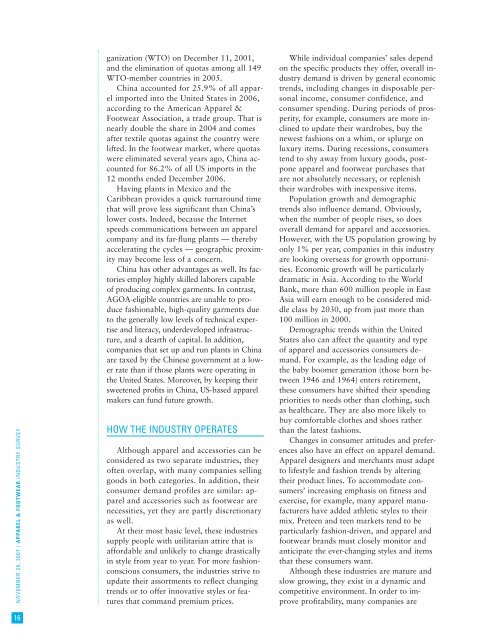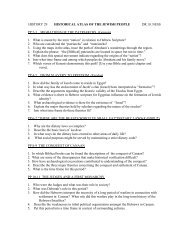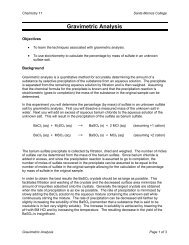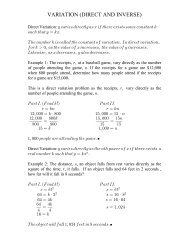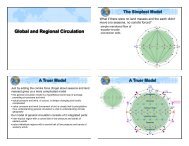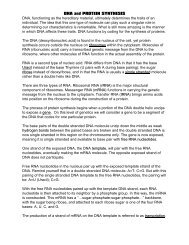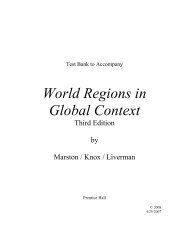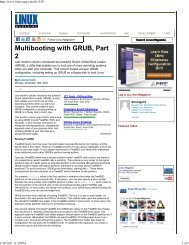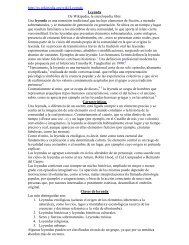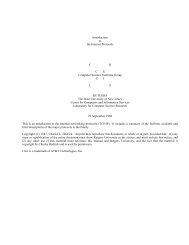You also want an ePaper? Increase the reach of your titles
YUMPU automatically turns print PDFs into web optimized ePapers that Google loves.
NOVEMBER 29, 2007 / APPAREL & FOOTWEAR INDUSTRY SURVEY<br />
16<br />
ganization (WTO) on December 11, 2001,<br />
and the elimination of quotas among all 149<br />
WTO-member countries in 2005.<br />
China accounted for 25.9% of all apparel<br />
imported into the United States in 2006,<br />
according to the American Apparel &<br />
Footwear Association, a trade group. That is<br />
nearly double the share in 2004 and comes<br />
after textile quotas against the country were<br />
lifted. In the footwear market, where quotas<br />
were eliminated several years ago, China accounted<br />
for 86.2% of all US imports in the<br />
12 months ended December 2006.<br />
Having plants in Mexico and the<br />
Caribbean provides a quick turnaround time<br />
that will prove less significant than China’s<br />
lower costs. Indeed, because the Internet<br />
speeds communications between an apparel<br />
company and its far-flung plants — thereby<br />
accelerating the cycles — geographic proximity<br />
may become less of a concern.<br />
China has other advantages as well. Its factories<br />
employ highly skilled laborers capable<br />
of producing complex garments. In contrast,<br />
AGOA-eligible countries are unable to produce<br />
fashionable, high-quality garments due<br />
to the generally low levels of technical expertise<br />
and literacy, underdeveloped infrastructure,<br />
and a dearth of capital. In addition,<br />
companies that set up and run plants in China<br />
are taxed by the Chinese government at a lower<br />
rate than if those plants were operating in<br />
the United States. Moreover, by keeping their<br />
sweetened profits in China, US-based apparel<br />
makers can fund future growth.<br />
HOW THE INDUSTRY OPERATES<br />
Although apparel and accessories can be<br />
considered as two separate industries, they<br />
often overlap, with many companies selling<br />
goods in both categories. In addition, their<br />
consumer demand profiles are similar: apparel<br />
and accessories such as footwear are<br />
necessities, yet they are partly discretionary<br />
as well.<br />
At their most basic level, these industries<br />
supply people with utilitarian attire that is<br />
affordable and unlikely to change drastically<br />
in style from year to year. For more fashionconscious<br />
consumers, the industries strive to<br />
update their assortments to reflect changing<br />
trends or to offer innovative styles or features<br />
that command premium prices.<br />
While individual companies’ sales depend<br />
on the specific products they offer, overall industry<br />
demand is driven by general economic<br />
trends, including changes in disposable personal<br />
income, consumer confidence, and<br />
consumer spending. During periods of prosperity,<br />
for example, consumers are more inclined<br />
to update their wardrobes, buy the<br />
newest fashions on a whim, or splurge on<br />
luxury items. During recessions, consumers<br />
tend to shy away from luxury goods, postpone<br />
apparel and footwear purchases that<br />
are not absolutely necessary, or replenish<br />
their wardrobes with inexpensive items.<br />
Population growth and demographic<br />
trends also influence demand. Obviously,<br />
when the number of people rises, so does<br />
overall demand for apparel and accessories.<br />
However, with the US population growing by<br />
only 1% per year, companies in this industry<br />
are looking overseas for growth opportunities.<br />
Economic growth will be particularly<br />
dramatic in Asia. According to the World<br />
Bank, more than 600 million people in East<br />
Asia will earn enough to be considered middle<br />
class by 2030, up from just more than<br />
100 million in 2000.<br />
Demographic trends within the United<br />
States also can affect the quantity and type<br />
of apparel and accessories consumers demand.<br />
For example, as the leading edge of<br />
the baby boomer generation (those born between<br />
1946 and 1964) enters retirement,<br />
these consumers have shifted their spending<br />
priorities to needs other than clothing, such<br />
as healthcare. They are also more likely to<br />
buy comfortable clothes and shoes rather<br />
than the latest fashions.<br />
Changes in consumer attitudes and preferences<br />
also have an effect on apparel demand.<br />
Apparel designers and merchants must adapt<br />
to lifestyle and fashion trends by altering<br />
their product lines. To accommodate consumers’<br />
increasing emphasis on fitness and<br />
exercise, for example, many apparel manufacturers<br />
have added athletic styles to their<br />
mix. Preteen and teen markets tend to be<br />
particularly fashion-driven, and apparel and<br />
footwear brands must closely monitor and<br />
anticipate the ever-changing styles and items<br />
that these consumers want.<br />
Although these industries are mature and<br />
slow growing, they exist in a dynamic and<br />
competitive environment. In order to improve<br />
profitability, many companies are


